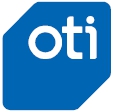Exhibit 1.01

ON TRACK INNOVATIONS LTD.
CONFLICT MINERALS REPORT
FOR THE YEAR ENDED DECEMBER 31, 2021
This is the Conflict Minerals Report (“CMR”) of On Track Innovations Ltd. (“OTI” or “Company”) for calendar year 2021 in accordance with Rule 13p-1 (“Rule 13p-1”) under the Securities Exchange Act of 1934 (the “1934 Act”). Please refer to Rule 13p-1, Form SD and the 1934 Act Release No. 34-67716 for definitions to the terms used in this Report, unless otherwise defined herein.
OTI has adopted a policy and methodology in accordance with Annex I, 1 – 5 Step Framework for Risk-Based Due Diligence in the Mineral Supply Chain from the Organization for Economic Co-Operation and Development Due Diligence Guidance for Responsible Supply Chains of Minerals from Conflict-Affected and High-Risk Areas, Second Edition, and related Supplements on Tin, Tantalum and Tungsten and on Gold (the “OECD Guidance”).
1. Products. Our product groups include, but are not limited to, cashless payment solutions.
2. Policy. OTI has developed and is currently implementing a reasonable and documented due diligence process, consistent with the OECD Guidance, to determine the use, source, and origin of conflict minerals in our global product portfolio. Additionally, we (i) expect our vendors to source materials from socially-responsible suppliers, including valid conflict-free mines, and (ii) we expect our vendors to conduct the necessary due diligence and provide us with proper verification of the source of the materials used in their products.
The design of our conflict minerals program is in conformity with the OECD Guidance, specifically as it relates to our position in the minerals supply chain as a Company that is several levels removed from the actual mining of conflict minerals. OTI does not make direct purchases of raw ore or unrefined conflict minerals. Summarized below are the design components of our conflict minerals program as they relate to the five-step framework set forth in the OECD Guidance:
1. Establish strong company management systems
1.1. Operate an internal “Conflict Minerals” steering committee led by our VP of Operations to develop our Conflict Minerals Sourcing Policy.
1.2. Implement a supply chain system of controls and transparency through the use of due diligence tools created by the Conflict-Free Sourcing Initiative (“CFSI”) which includes the Conflict Minerals Reporting Template (“CMRT”) supplier reporting template for Reasonable Country of Origin Inquiry (“RCOI”), a supply chain survey designed to identify the smelters and refiners that process the necessary conflict minerals contained in our products.
1.3. Provide from time to time as should be necessary training on the relevant rules for the Company’s purchasing, legal and finance employees.
2. Identify and assess risks in our supply chain
2.1. OTI held meetings with management from various departments to discuss the applicable definitions of “manufacturer” and/or “contract to manufacture”. Through this process, OTI identified product groups that are affected by Tin, Tantalum, Tungsten and Gold and mapped them to their respective vendors.
2.2. OTI evaluated its product groups, sourced from 70 vendors, determining that approximately 34% percent of its vendors may be subject to the RCOI survey process.

3. Design and implement a strategy to respond to identified risks
3.1. Design and adopt a risk management plan that includes due diligence reviews of suppliers, smelters and refiners that may be sourcing or processing conflict minerals from the Covered Countries which may not be from recycled or scrap sources. Our due diligence measures are significantly based on the current standard multi-industry due diligence initiatives to evaluate the procurement practices of the smelters and refiners that process and provide those conflict minerals to our supply chain.
3.2. The process included the development of standard operating procedure OTI will utilize to identify and act on supply chain risks.
4. Support the development and implementation of independent third party audits of smelters and refiners sourcing
Support, as shall be reasonably required, the development and implementation of audits of smelters and refiners conducted by third parties who operate within programs and initiatives such as CFSI in relation with OTI.
5. Report on supply chain due diligence
OTI has compiled its results and filed this report in accordance with Rule 13p-1 through the use of the Form SD and the attachment of a CMR. The CMR is also available at: http://investors.otiglobal.com.
Below is a description of the measures we performed for the reporting period to exercise due diligence on the source and chain of custody of the necessary conflict minerals contained in our products that we had reason to believe may have originated from the Covered Countries and may not have come from recycled or scrap sources:
1. Designed and adopted a risk management plan that includes due diligence reviews of suppliers which we identified may be sourcing or processing conflict minerals from the Covered Countries and which may not be from recycled or scrap sources.
2. Conducting a supply-chain survey with direct suppliers of materials containing conflict minerals using the CMRT supplier reporting template for RCOI to identify the smelters and refiners.
Conflict Minerals Disclosure
The Conflict Mineral Process, as described above, allowed OTI to identify in-scope products and the corresponding vendors. These identified vendors were surveyed through the RCOI Survey process using the CMRT supplier reporting template. OTI received to date survey responses from approximately 54% of its vendors that are subject to the RCOI survey process. The responding suppliers represent a majority of the manufacturing volume of OTI’s products. However, the results from the surveys did not allow OTI to reach a reportable conclusion as to the source of any potential conflict minerals.
Future Due Diligence Measures:
1. Contact from time to time as shall be reasonably required direct suppliers that do not respond to the supply chain survey by a specified date, requesting their responses.
2. Compare as shall be reasonably required and/or applicable smelters and refiners identified by the supply chain survey against the list of facilities that have received a “conflict free” designation from the Conflict Free Smelter Program.
This CMR was not subjected to an independent private sector audit.

